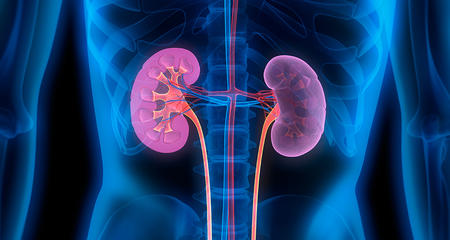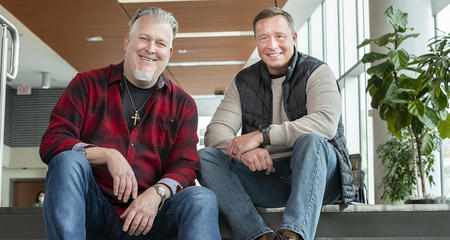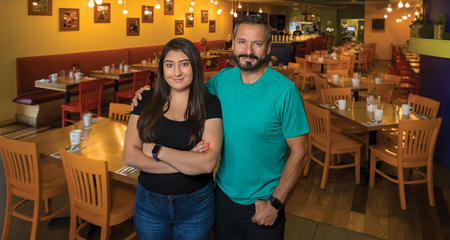Even with a willing living donor, nearly a third of adult kidney transplant candidates will not match with their intended donor due to blood type or tissue incompatibility. Participating in kidney exchange programs, as we do at Froedtert Hospital, significantly improves access to potential compatible donors around the country.
Kidney exchanges also can dramatically decrease the time recipients need to wait for a kidney. The average wait time for a kidney transplant facilitated through the National Kidney Registry – of which Froedtert Hospital is a member – is 11 months.
How a Kidney Exchange Works
In a kidney exchange, a donor with an incompatible recipient is willing to donate a kidney to another recipient who has an incompatible donor. There are two types of exchange processes.
Looped or paired exchanges involve two pairs of donors and recipients. The original pairs of donors and recipients are not compatible, but they do match another pair. In the example below, the donor on the left donates to the recipient on the right, while the donor on the right donates to the recipient on the left.

Kidney chains involve more donors and recipients, so they have the potential to secure more compatible donors for recipients involved. Chains begin when a good Samaritan or non-directed donor steps forward, often on behalf of an incompatible recipient, and willingly gives a kidney to an unknown recipient. In return, the incompatible recipient will receive a kidney from another donor.

Recognized as High Performing by U.S. News & World Report
Froedtert Hospital is nationally ranked in urology by U.S. News & World Report. Froedtert Hospital is also recognized as high performing in three adult specialties and 16 procedures and conditions, including kidney failure treatment.More to Explore





